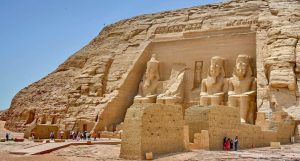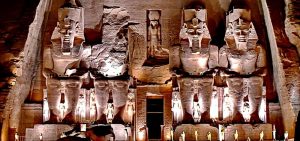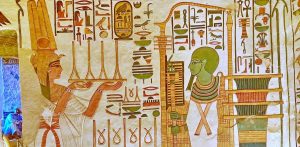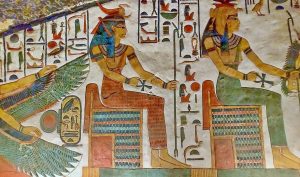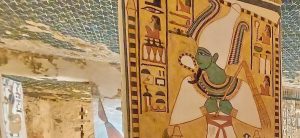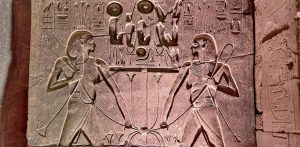Who exactly is King Menes?
“King Menes” is the founder of the first dynasty in Egyptian history and the final king of the predynastic period (6000-3150 BCE). As shown on the renowned Narmer Palette, he was able to unite both upper and lower Egypt around 3150 B.C. His name means “The One Who Survives,” and he ruled for 62 years. To solidify his rule, he married Princess Neithhotep of Naqada. Many people think he inherited the kingship from Horus, the deity of triumph and protection.
Egypt under King Menes’ reign
Prior to that time, Egypt was divided into two kingdoms: Upper Egypt in the south and Lower Egypt in the north, with a crowned king for each and a series of wars between them, until “King Menes,” the king of lower Egypt, put an end to that by defeating the king of upper Egypt and crowning himself as king of the two lands, upper and lower Egypt, and establishing the first centralized monarchy. Following the union of both lands, “King Narmer” relocated Egypt’s capital to Abydos. He dispatches many military missions throughout Egypt and adjacent nations like Cannan and Nubia. He constructed new towns such as Memphis, a new wave of urbanization swept throughout ancient Egypt, and much emphasis was placed on establishing the art of writing. He is credited with inventing the concept of luxury, since the Egyptians developed numerous costly pastimes to occupy their time after unifying the country, including sports, making beer, carving, sculpture, gardening, and many more.
What exactly are Narmer Palettes?
“King Menes” hailed upper Egypt’s triumph over lower Egypt with his renowned Narmer Palette, which was unearthed from Hyracnopolice El Kom El Ahmar approximately 22 kilometers east of Cairo. This palette was transported from the Egyptian Museum in Cairo to the Grand Egyptian Museum, so begin your journey to Egypt by visiting the museum and viewing the palette.
What depictions Are in King Narmer’s Palette?

Narmer Palette has two sides known as recto and verso. On both sides, we can read King Narmer’s name inscribed in a little square as “Ne3Rmer,” and the name is protected from both sides by the renowned face of the Cow Hathor, the deity of love, harmony, and motherhood. On the “Verso” side of the palette, Narmer depicts Menes wearing the red wicker war crown of upper Egypt, indicating that he has taken control of the entire country. The palette’s largest engravings depict two men intertwining serpentine necks of mysterious animals known as serpopards. At the bottom of the palette, the monarch is shown as a bull with horns smashing through the city walls and stomping his foes beneath his hooves. There is also a priest dressed in leopard leather who adheres to four divine criteria. On the opposite side of the palette, “The Recto” depicts Narmer with his army preparing to strike down an enemy captured by the hair, and beneath his top feet are two men either dead or attempting to escape his wrath, plus behind the king, there is a bald servant holding his sandals, and in front of him is the sky god Horus watching and blessing King Narmer’s victory by bringing many enemy prisoners. At the very top of the palette are cows and bulls that are linked with the goddess Hathor of celebration and joy, which is depicted as a cow or a lady with cow’s ears, and the bull is a sign of the king’s power and vitality.
King Menes’ Works
When Egypt was united, King Narmer introduced religious rituals and codified beliefs; his reign was so wealthy that he reigned for almost 26 years. “King Narmer” was very interested in hobbies and developing them, such as carving, sculpture, and athletics. It’s worth noting that Egypt thrived greatly under his reign.
Where was the Tomb of King Menes built?
His tomb can be discovered in upper Egypt at Um Qa’ab, near Abydos. It is made of mud bricks and consists of two connected chambers. The tomb has two necropolis seals that establish his identification as the first dynasty’s king.
Top-rated Egypt Tour Packages
Visit Egypt to learn more about the Egyptian Pharaohs. “The Cradle of Human Civilization,” plan your Egypt tour packages to see the greatest historical monuments in Egypt, and then go on a luxury Nile cruise between Luxor and Aswan.

